Gasteria excelsa
| Botanical Name | Gasteria excelsa |
|||||||||||
| Family | Asphodelaceae - The Asphodel family. |
|||||||||||
| Pronunciation | gas-TAIR-ee-uh ek-SEL-suh |
|||||||||||
| Common Name(s) |
English: Thicket ox-tongue
Afrikaans: Ruigte-beestong
|
|||||||||||
| Plant Group |
|
|||||||||||
| Plant Size |
|
|||||||||||
| Position |
|
|||||||||||
| General Information |
|
|||||||||||
| Specific Information | Gasteria excelsa is a robust, short stemmed aloe-like plant with triangular, dark to mottled green leaves edged with white. The edges of the leaves can be very sharp and in some cases may be finely serrated. The brittle, smooth leaves are broad at the base with a distinctly off-centre keel and are arranged in a dense rosette which can grow up to 60 cm in diameter. In the wild they are solitary plants, rarely sending up new shoots. Juvenile plants are densely white-spotted but the spots fade with maturity and are rarely visible. It is one of the largest of the Gasteria species. As with many other succulent plants, the leaves will turn red if the plant is stressed. Suitable for outdoor planting in USDA hardiness zones 9 - 11. |
|||||||||||
| Ad Break | ||||||||||||
| Flowers | ||||||||||||
| Description | a bulbous, tubular shape, dusky pink at the base, fading to yellowish and ending with green and cream stripes, on long stems carrying 30 to 100 flowers per stem |
|||||||||||
| Season |
|
|||||||||||
| Colour |
|
|||||||||||
| Growth Rate |
|
|||||||||||
| Plant Uses |
|
|||||||||||
| Distribution and Habitat | in the Eastern Cape Province, from Port Alfred to Somerset East, Queenstown and the Kei River, on well drained sites in Albany Thicket and Eastern Valley Bushveld, on embankments, sheer rock faces, in shady undergrowth, on exposed south-facing cliffs and occasionally in open grassland |
|||||||||||
| Planting Suggestions | Gasteria excelsa thrives in cultivation both as a pot plant or in the garden. Plants in partial or light shade protect from full sun. Propagate from seed sown in spring or summer in a warm, shady position in a sandy slightly acidic soil and keep moist. Cover with a thin layer of sand and apply fungicide. Seedlings grow slowly so do not plant out until the plants are sturdy - at least a year. Gasteria excelsa is also easily grown from leaf cuttings. Allow the leaf cutting to dry in a warm spot for at least a month then root in clean sand. Feed plants with compost or organic liquid fertilizer. Water throughout the year but less so during summer. Ensure free drainage of the growing medium as Gasterias do not like wet feet - rather err on the dry side. |
|||||||||||
| Medicinal Uses | The use of Gasteria excelsa is traditional rather than medicinal. Plants are occasionally grown on roof tops by the IsiXhosa people as a protection from lightning and , reportedly, parts of the plant were used by warring factions, believing that it made them invisible to their enemies. |
|||||||||||
| Ad Break | ||||||||||||


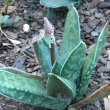
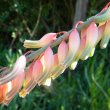
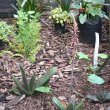
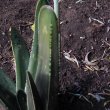
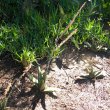
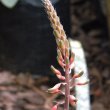


Comments
Toxic to Cats?
Do you know if Gasteria's are toxic to cats? Any information that you can supply would be greatly appreciated.
I have a sunroom attached to my home and have many Gasterias. I just adopted two kittens and wonder if I should get rid of my plants with the arrival of the kittens. Thank you, Mary.
Toxicity of Gasteria
Hi Mary
Usually when a plant is in any way poisonous to humans, birds or animals, the information is well documented. I have searched diligently but have been able to find no direct reference to Gasteria being toxic to humans or to stock.
Personally I wouldn't bother to remove the plants but if you are still worried, you might want to remove them while the kits are still young and adventurous and may nibble on the plants.
If your gasterias are of the kind that have very sharp points, then I would suggest you remove them as they could be damaging to the eyes of kittens running around playing wildly.
Perhaps a reader will be able to give us a more scientific answer.
Kind regards
Lorraine
Finally!
I'm in Tucson, Arizona, USA and have been trying to find out what type of succulent I had that looks like this so I could learn why it was so unhappy with life (and indeed, it's pretty reddish). If it's not this species it's almost certainly a Gasteria of some type I think. Looks like I have my answer why it's unhappy too, I've been giving it full arizona sun like my cacti. Thank you for your site!
Gasteria in Arizona
Hi Alex
Welcome to my site and my apologies for taking so long to reply to your comment.
From what I have gathered, the Arizona sun is pretty harsh and Gasteria in general do like a bit of shade. Even those in full sun in South Africa are in a much more salubrious situation compared to full sun in Arizona.
Hope your Gasteria is recovering. Perhaps you could send a picture?
Kind regards
Lorraine
Discuss this plant
Share knowledge, ask a question or give an experience.